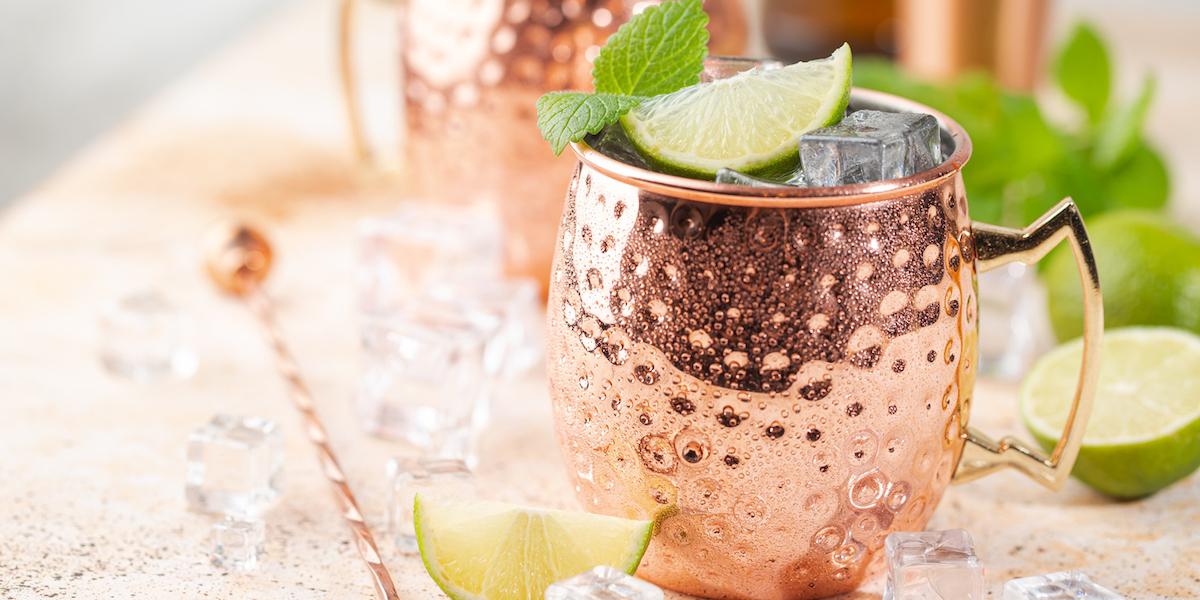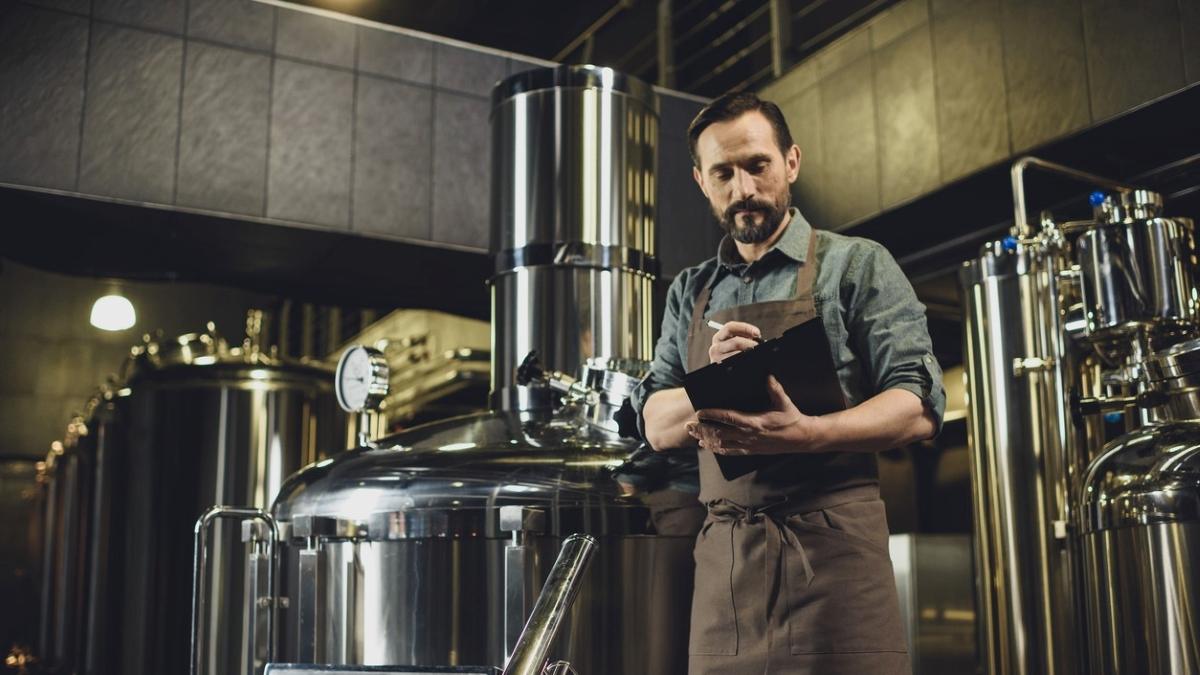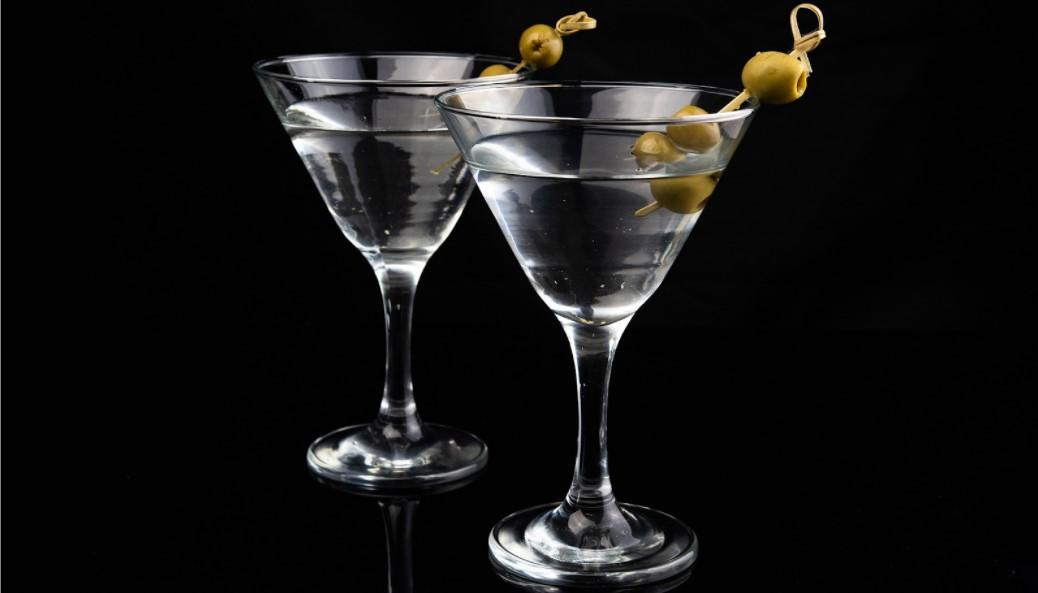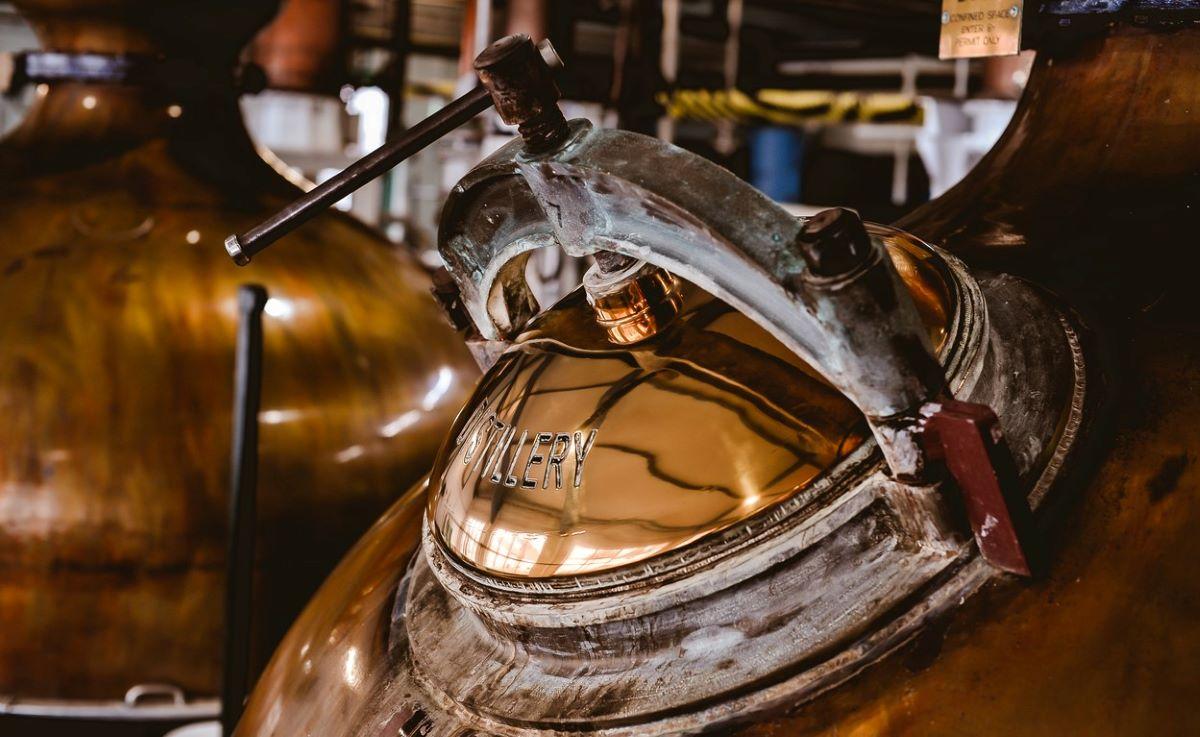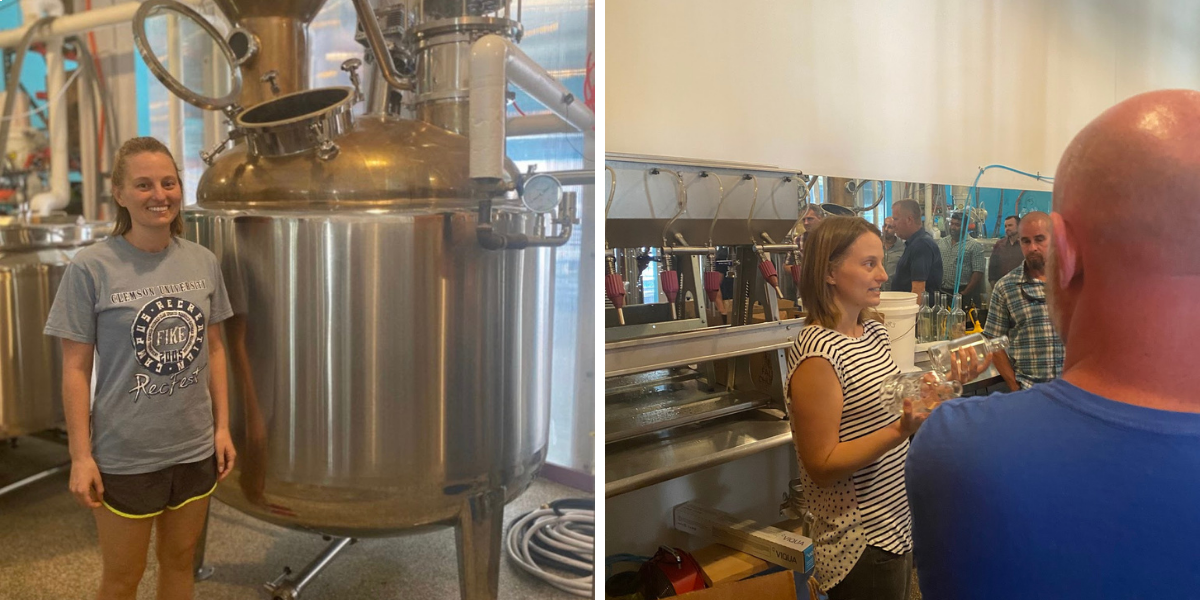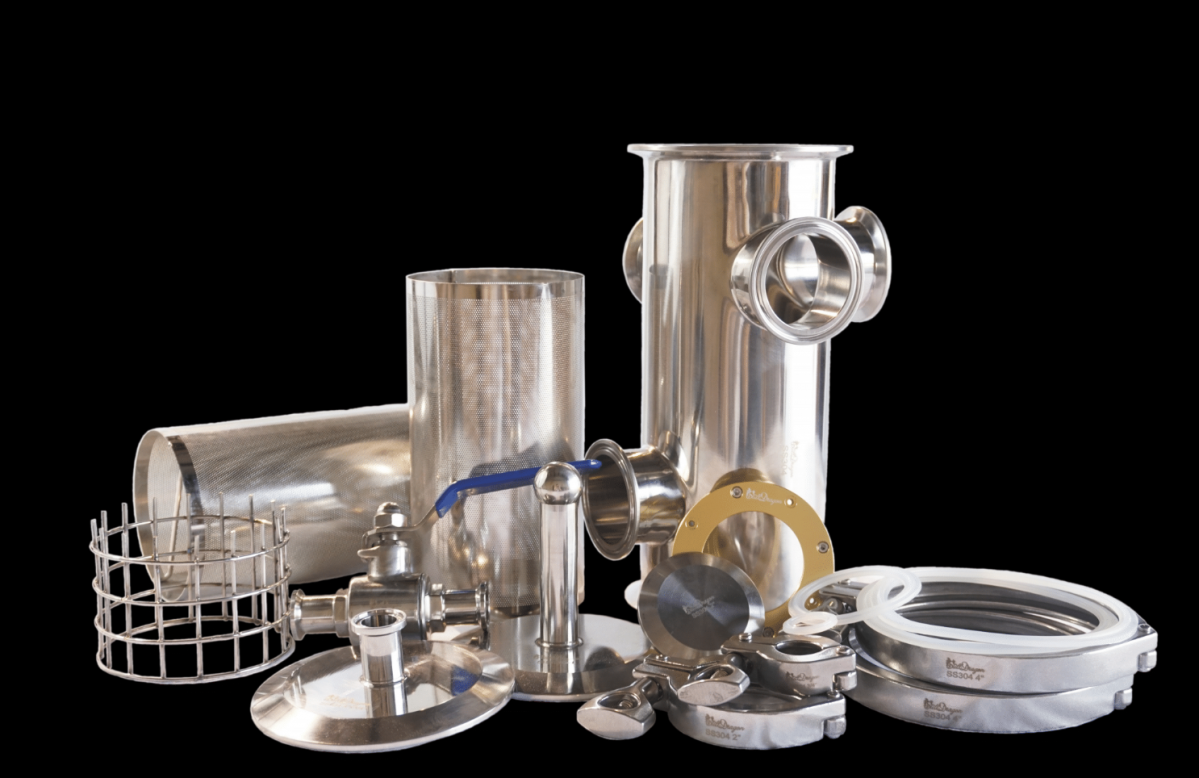Within every industry you’ll find there is an entire language that only the industry professionals and enthusiasts use. Interacting with someone that is familiar with this terminology can make communicating so much easier with folks in the profession. But even within the alcohol industry there are different levels of terminology. There is production terminology, distribution terminology, government oversight terminology, retail sales terminology, spirits consumption terminology. A virtual cornucopia of esoteric “likker” speak to say the least.
We personally, are most comfortable with the colloquialisms most commonly (and not so commonly) used on the production side of the industry. Even within the production side, there are terms that the formally educated use, and terms that the not so formally educated use. Terms that can be considered humorous, or even quite vulgar to the lesser informed.
For your reading pleasure here is a glossary of terms typically used by distillers:
A
ABV
Alcohol by Volume, often expressed as a percentage. Example 40% ABV.
Alcohol
A member of a class of organic compounds containing carbon, hydrogen and oxygen.
Alcometer / Alcoholmeter
An instrument used to find the ethanol percentage in a strict binary ethanol-water solution. Sometimes referred to as a “Proof and Traille”.
Aldehyde
A volatile impurity found in the foreshots.
Alembic
The traditional pot still that requires several cycles of distillation in order to refine the alcohol to the desired level.
Aqua Vitae
Strong distilled alcohol; Latin for “water of life”.
Azeotrope
Liquid mixture of two or more components, which has a unique constant boiling point. Maximum azeotrope for alcohol is 192 degrees proof (96% ABV).
B
Backset
The acidic liquid left in the still after distillation of whiskey has completed. Used in the creation of sour mash whiskey.
Barm
The foam, or scum formed on the top of liquor (i.e. fermented alcoholic beverages such as beer or wine, or feedstock for hard liquor or industrial ethanol distillation) when fermenting.
Barrel
A liquid measure. Barrel measurements vary from 42-53 US gallons, 44 Imperial gallons, or 200.6 litters, or 5.6 cubic feet are all used. Or, a wooden container usually made from white oak used for the aging and maturation of alcoholic beverages. Barrels used for whiskey maturation are made of oak wood, and have a capacity of about 52 U.S. gallons. Barrels may be used only once for aging bourbon whiskey, so there is a worldwide trade in used bourbon barrels for aging other alcoholic products such as Scotch whiskey and rum.
Beer Stripping
A crude primary distillation of fermented wash. See stripping.
Bier Unser (= beer prayer in German language)
Bier unser, das du bist im Glase, gesegnet werde dein Brauer, dein Rausch komme, dein Wille geschehe, wie zu Hause als auch im Wirtshaus. Unseren täglichen Durst gib uns heute und vergib uns unsere Schuld, wie auch wir vergeben unseren Schuldnern. Und führe uns nicht in die Milchbar, sondern gib uns Kraft weiter zu saufen. Denn dein ist der Suff, der Rausch und der Durst und die Benommenheit in Ewigkeit. Prost!
Birdwatchers
See TPW.
Boka / Bokakob
A liquid management style still.
Bubble Caps
Used in a column and sit over risers. Caps provide contact between the rising vapors and descending enriching the vapors.
C
Carbon Dioxide
A colorless non-flammable gas. Composition CO2, does not support human respiration, and in high concentrations it causes asphyxiation. It is approximately 1.5 times the weight of air, and tends to accumulate in floor drains, pits and in the bottoms of unventilated tanks. When it is produced by various means, notably the combustion of fuels in an excess of air, and is a byproduct of yeast fermentation. It may be recovered from fermentations and compressed to a liquid or solid (“dry-ice”).
CCVM
Condenser Controlled Vapor Management: A type of reflux still which is controlled by a movable cooling coil instead of a valve typical for a VM still.
Channeling
Is the unequal wetting of the packing in the tower. If channeling occurs, poor mass transfer happens, and therefore, less efficiency of the tower.
Charge
The volume of alcoholic beverage wash, or low wines going to the still.
CIP
Clean in Place: Means cleaning without disassembling.
CM
Cooling Management: A type of reflux still which is controlled by the “management” of the rate of flow of coolant to control the reflux rate / output. The Dash series are CM stills.
CNIP
Clean not in Place: Means cleaning with disassembling.
Column
The vertical section rising off a boiler. Can consist of either a plated column; a packed section or a combination (hybrid).
Condensation
The process by which a gas or vapor changes to a liquid.
Condenser
A heat exchanger in which hot vapors are cooled and condensed into liquids.
Congeners
Impurities. These minor chemicals give liquor (spirits) distinctive character and flavors. Found in both heads and tails. Maybe considered desirable or undesirable depending on quantity and type.
COP
Clean out of Place: Means cleaning with disassembling.
Cuts
The process of separating different types of alcohol. Usually cuts are made for foreshots, heads, hearts and tails during the final distillation run.
D
DAP
Diammonium Phosphate, a yeast nutrient.
DC
Abbreviation of Down Comer.
Density Meter
Portable device that measures specific gravity thus allowing the distiller to make precise cuts.
Dephlegmator
A reflux condenser at the top of the column that sends distillate back toward the boiler increasing the purity of the spirit.
Dextrose
Basic sugar also known as corn sugar.
Distillate
A liquid condensed from vapor in distillation; a purified form.
Distillation
The process of boiling and condensing a mixture of volatile liquids that changes the relative concentrations of those liquids in the output. The evaporation and subsequent collection of a liquid by condensation as a means of purification. The separation of a liquid mixture into its components on the basis of differences in boiling points. The process in which components of a mixture are separated by boiling away the more volatile liquid.
DME
Dried malt extract. When dissolved in water and fermented can be distilled. Sometimes used as a substitute to all grain mashing of barley malt.
Double Distilling
A process where the distillate is distilled twice first to remove alcohol and second distillation is to make cuts separating heads, hearts, and tails.
Downcomer
A pipe or tube for moving fluid material downward usually transferring liquid from one tray to the one below in a bubble tray column.
Dunder
The acidic liquid left in the still after distillation of rum. Used in subsequent fermentations to produce more flavored heavy rum.
DWWG
Death Wish Wheat Germ recipe.
E
Enzymes
Proteins that assist conversion of starches into sugars that will ferment.
Esters
Fermented byproducts made by yeast action that contributes fruity characteristics, aroma, and flavor to the wash.
Ethanol
Otherwise known as ethyl alcohol, “alcohol”, “grain-spirit”, or “neutral spirit”. A clear colorless, flammable oxygenated hydrocarbon Chemical formula: C2H5OH. It forms a binary azeotrope with water, with a boiling point of 78.15°C at a composition of 95.57 per cent by weight ethanol.
F
False Bottom
In a mash tun the false bottom is slotted copper pipe, the slots of which allow wash to drain while holding back the grain, while the false bottom in a brew kettle is a perforated plate or bazooka screen.
Feints
Often used to refer to a mixture of heads and tails to be recycled into a following run. Some feel feints refer to tails only but not always defined as such on the various forums.
A change that takes place when yeast converts the sugar to alcohol. The anaerobic conversion of sugar to carbon dioxide and alcohol by yeast.
Fermenter
The vessel in which the process of fermentation takes place. The vessel may be fabricated from plastic, stainless steel etc. Commercial fermenters are normally fitted with an internal or external cooling system for controlling the temperature of the fermenting mash.
Final Gravity
The density of the wash after fermentation. Knowing the original and final gravity of a wash allows you to determine the percentage of alcohol of the wash.
Flocculation
The clumping and settling of yeast out of solution, forming a cake-like substance in the bottom of the fermenter.
Flute
Scaled down commercial type plated still. A name coined by “Old Dog”.
Foreshots
A small amount of low boiling distillate containing acetone, methanol, and aldehyde volatiles. Note that the fore shots are hazardous and must not to be consumed!
Fractional Distillation
A process by which a chemical compound is separated into components by distillation. In fractional distillation the compound is heated and, as each of its constituent components comes to a boil, its vapors are separated and cooled, so it can be removed in its pure form.
Fractional Still
Apparatus to perform fractional distillation. Has a vertical column still using plates and bubble caps or packing. The process separates spirits into different volatility.
Fusel Oil
A bitter oil found in tails. A liquid composed of amyl and isobutyl alcohols. A term used to describe the higher alcohols, generally the various forms of propanol, butanol and amyl alcohol, which are congeners, or by-products of ethanol fermentation – predominantly, iso-amyl alcohol. Their presence in alcoholic beverages is known to be a cause of headaches and hangovers. The fusel oils have higher boiling points than ethanol and are generally removed in the distillation process.
G
Graham Condenser
A condenser that has the coolant-jacketed spiral coil running the length of the condenser.
H
Head
The top of the still.
Heads
Spirits from the beginning of the run that contain a high percentage of low boiling alcohols and other compounds such as aldehydes and ethyl acetate. Term used to describe the impurities produced in ethanol fermentations (“congeners”), which have lower boiling points than ethanol. They include methanol and aldehydes. (Always the beginning phase of the distillation process.)
Hearts
The desirable middle alcohols from your run.
HERMS
Heat Exchanger Recirculating Mash System, see here for more details.
HETP
Height Equivalent of a Theoretical Plate.
Hybrid
A still made by adding a packed column on top of a plated column.
Hydrometer / SG Meter
An instrument that measures the weight or gravity of a liquid in relation to the weight of water. Cannot be used to directly measure alcohol already in a mixture. Sometimes referred to as wine or triple scale hydrometer for measuring sugar content in washes.
I
Infrared Thermometer Gun
Instant reading thermometer device.
L
Lees
What is left in your fermenter after the liquid is siphoned into the still usually contains spent nutrients and barm.
Liebig / Liebig Condenser
A straight-tube jacketed condenser at the product end of a still.
LM
Liquid Management: A type of reflux still which is controlled by the “management” of the rate of liquid output.
Low Wines
The spirits collected from the first distillation.
Lyne Arm
In a traditional pot still the tubing from the pot’s head to the condenser.
M
Malt
Sprouted dried grains. Malted grains contain enzymes that convert starches into fermentable sugars. Typically barley, however other grains like wheat, rye & corn are also malted.
Mash
A mixture of ground malted grains and hot water. A mixture of milled grain or other fermentable carbohydrate in water, which is used in the production of ethanol. The term may be used at any stage from the initial mixing of the feedstock in water, prior to any cooking and saccharification, through to the completion of fermentation, when it becomes referred to as “beer” or wash.
A tank with a false bottom in which hot water and grains are mixed to produce wort.
Must
A fermentable liquid that uses the sugars from fruit.
MUM
Mason’s Universal Mash also known as TPW, a nutrition-enhanced tomato-paste sugar wash.
N
Neutral / NGS / Neutral Grain Spirits
95+% ABV alcohol. Most often produced from corn wheat & other grains. Used by distilling companies around the world for blending to produce vodka, gin and whiskey.
Nuked Product / Nuking
An attempt to accelerate the maturation of spirits through direct exposure to microwave radiation and its resultant rapid heating and cooling cycles.
O
Oaking
Process of aging your liquor in oak barrels, chips or sticks.
OG
Original Gravity. The density of the wash before fermentation.
P
Packing
Material that is used to fill a still’s column to increase the surface area and thus the reflux and quality of the alcohol. Common packing includes stainless steel scouring pads & copper mesh. Spiral Prismatic Packing (SPP), marbles and Scoria (a type of volcanic rock) have also been used. One commercially produced packing is “Rasching rings”.
Parrot
A device resembling a stylized bird that attaches to the still or is at the point of collection that floats the alcoholometer (alcometer, proof and Traille hydrometer).
PBW
Powdered Brewery Wash, a patented alkali cleaner originally developed for Coors, now widely used in commercial breweries across North America.
PC
Abbreviation of Product Condenser.
pH
A measure of the acidity or alkalinity of a solution. The pH scale ranges from 0-14.
Pitch
The process of adding yeast to the wash.
Plates
Sometimes known as trays, they are located horizontally at intervals in a column, often contain bubble caps that enrich the reflux.
Pot Still
A simple batch distillation unit used for the production of heavily flavored distillates for beverage use. It consists of a tank, (which is heated either by an internal element or steam coil, or by an external heat source eh gas burner), and an overhead-vapor pipe leading to a condenser. It may be used in the production of heavily flavored rums and whiskies or to strip wash.
Proof
A measure of the absolute-ethanol content of a distillate containing ethanol and water. A measurement of alcohol strength. In the U.S. system, each degree of proof is equal to 0.5 per cent of ethanol by volume, so that absolute ethanol is 200° proof.
R
RC
Abbreviation of Reflux Condenser, sometimes a dephlegmator is referred to as a RC.
Reflux
Formed when vapors condense and re-vaporize in the column of a still.
Reflux Ratio
The ratio of the amount of condensate being refluxed to the amount being withdrawn as product. Generally, the higher the reflux ratio, the greater is the degree of separation of the components in a distillation system.
Reflux Still
This still differs from a pot or alembic still in that multiple distillations occur in one single cycle. The addition of a column with packing, plates (sieve, bubble caps or valved) between the condenser and pot allows vapor to condense and trickle back down to be distilled once again. Thus, the vapor is repeatedly cleansed and the resulting purity from one cycle is much higher than that from a pot or alembic still.
RIMS
Recirculating Infusion Mash System.
S
Saccharification
The process of converting a complex carbohydrate, such as starch or cellulose, into fermentable sugars such as glucose or maltose. It is essentially a hydrolysis. The process may be accomplished by the use of heat, enzymes or acids.
SD
Abbreviation of StillDragon.
SG
Specific Gravity. SG meters are a hydrometer calibrated to measure sugar content in a wash to determine potential alcohol.
Shot Gun
A shell in tube type of condenser with multi-tubes where the vapors pass through the tubes surrounded by coolant.
Slant Plate
A liquid collection plate used in a Bokakob style reflux still.
Slop
Hot stinky spent corn mash from the still. See Backset.
Sparging
At end of mashing, a process in which hot water is sprayed on or run through the grain bed to extract additional sweet wort.
Spirit Run
The final distillation producing finished product.
A still designed to do the final distillation, often referred to when producing finished whiskey.
SPP
Spiral Prismatic Packing used in reflux type stills.
Stripping
The process of running low ABV wash through a still with no head or tails cuts to increase alcohol concentration before being re-distilled.
Sugar Head
Grain ferment that sugar has been added to achieve a higher alcohol potential.
Sweet Spot
Head temperature in a reflux still between 78.89C and 82.22C. This range produces a sweet tasting spirit and is considered the heart of the distillation run.
T
Tails
A distillate containing a high percentage of fusel oil and little alcohol collected at the end of a run. The term is used to describe the alcohol that falls below 80 proof during the distillation process – also known as the end phase.
TC
The Abbreviation of triclamp, is also known as tri clover.
TPW
Tomato Paste Wash sometimes referred to as “Birdwatchers”. A simple wash used for creating a clean simple neutral “vodka like” spirit.
U
UJSSM
Uncle Jesse Simple Sour Mash. Faux bourbon recipe made from corn and sugar.
V
VM
Vapor Management: A type of reflux still which is controlled by the “management” of the rate of vapor output.
W
Wash
Fermented substrate containing alcohol.
Wort
The solution of grain sugars strained from the mash tun (unfermented beer).
WPOSW
Wino’s plain old sugar wash recipe.
Y
Yeast
Any of a certain unicellular fungi, generally members of the class Ascomycetaceae. Many types of yeast are capable of producing ethanol and carbon dioxide by the anaerobic fermentation of sugars. Yeasts are composed of approximately 50 percent protein and a rich nutritional source of B vitamins.

